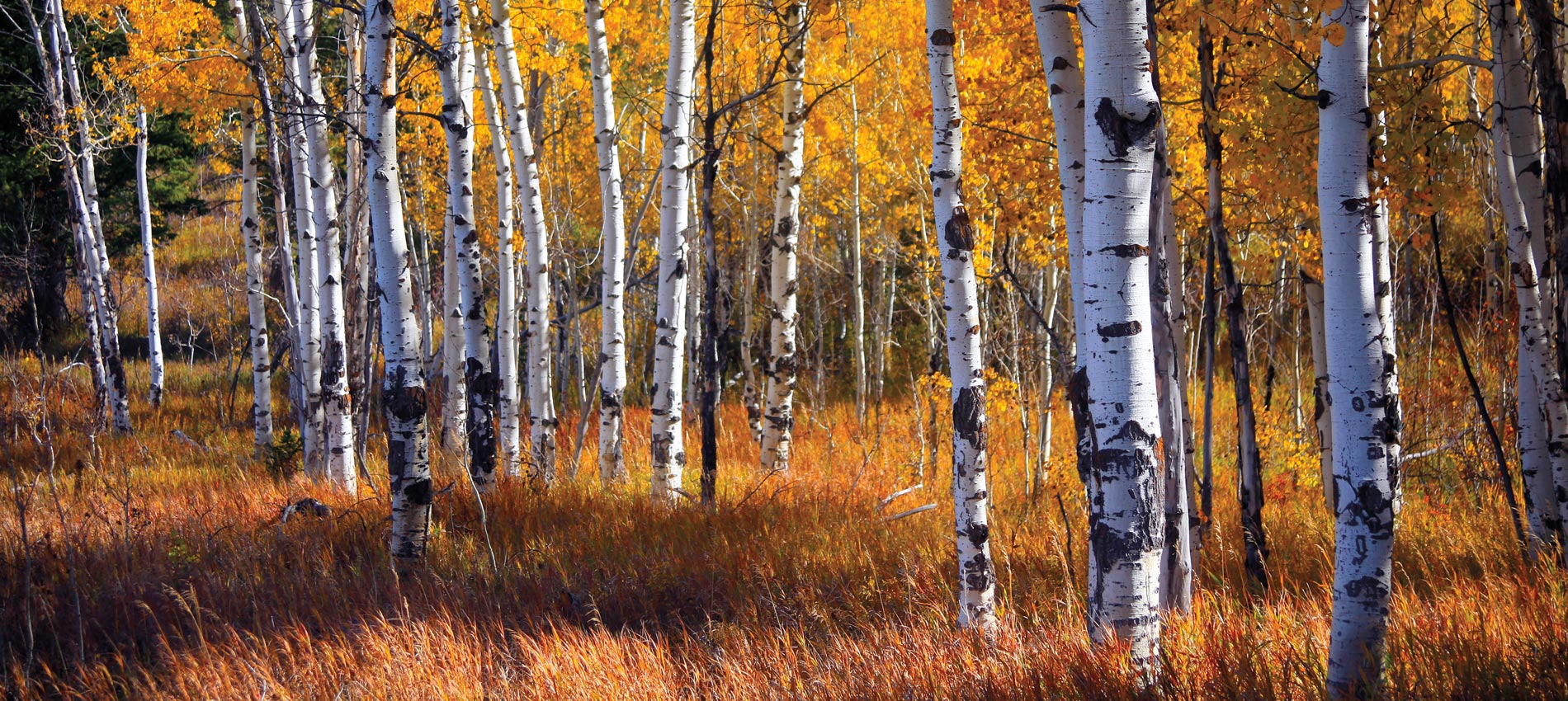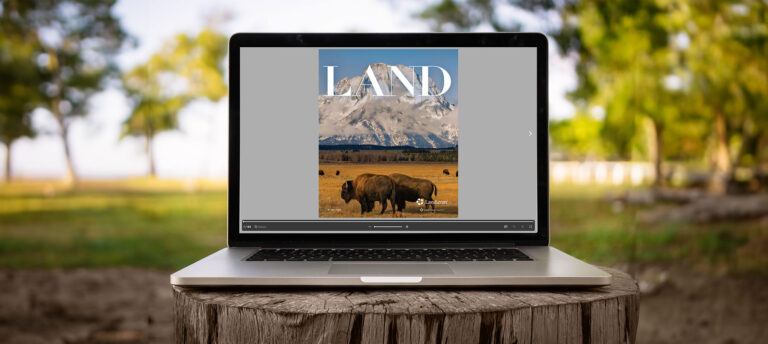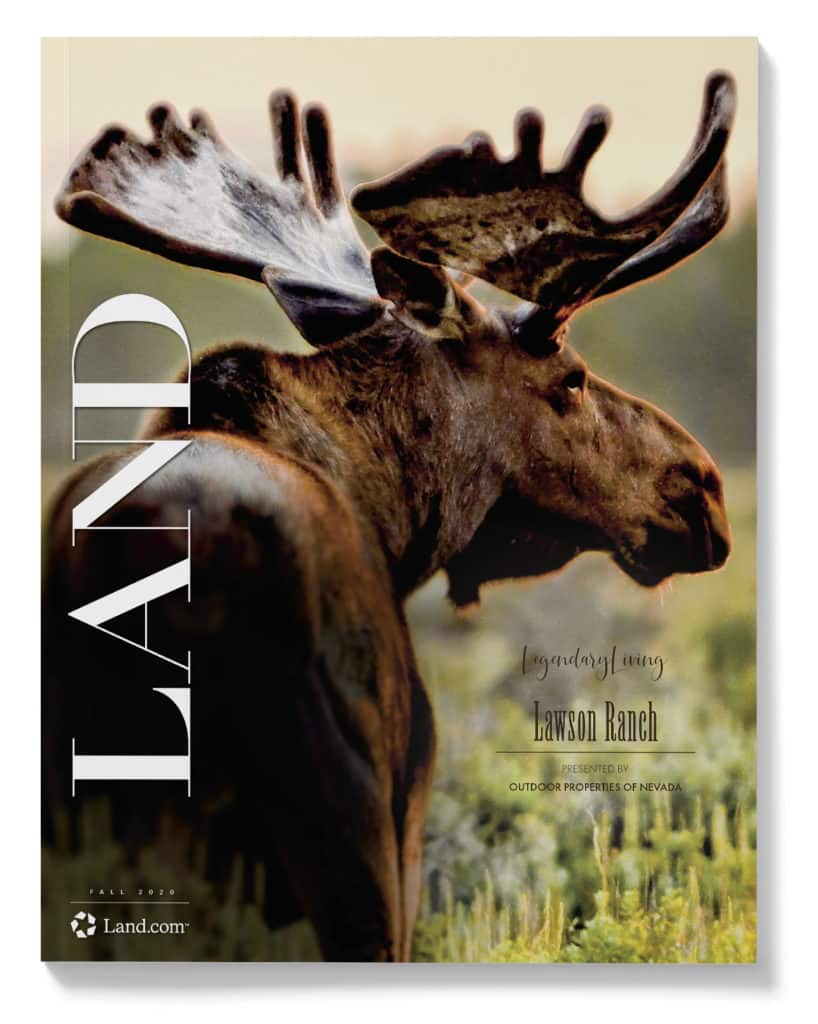
This article is featured in the Fall 2020 issue of LAND magazine. Click here to find out more.
When Russick Smith goes for a short stroll, walk or hike, he always brings the four-by-four-foot cello from his childhood. Donning his hallmark cab hat, the beatnik has no need for detailed plans, the latest gear, nor outdoor getup. The intrepid Colorado native prefers to simply head outside with his bare instrument in hand “for quite a ways, a mile, mile-and-a-half,” just switching hands. He’s un-phased when his adventures call for scrambling over rocks and branches, fording a stream or trudging a dusty trail.
As for his cello, Smith is proud of all its scratches and markings. They show off its character and “their” adventures. Whether outside for minutes, hours, or an entire day, the unlikely duo is scouring landscapes for one thing: the perfect spot to play.
“There’s nothing I feel like that’s off-limits,” he once told a TV reporter. “If it’s possible, and even if it seems impossible, I’m game.”
The modest, philosophical multi-instrumentalist takes each search very seriously. Every location is “ripe for musical interpretation,” and learning from his fellow musicians—the sounds of nature. He thrives on feeling like a kid again. “I’m back to being that kid, going out and exploring the woods,” he says. “Nature is one of the most inspiring places to make music.”
To reach his favorite place, he has to carry his cello in its bright red case. It’s the safest way to scramble through a narrow crack, down into a cave in the White River National Forest, east of Aspen. If a hiker peered into the crack, they wouldn’t be able to see Smith playing in his “private amphitheater” in the The Grottos cave network, formed by 8,000 years of glacial activity.
The sound of the water is one of his accompanists. Down under, in this exquisite space of rock and water, Smith delights in playing with an entire ‘symphony’ of sounds.”
“The water has carved out the cave to make it look like a concert hall!” Smith may appear to be soloing, but he sees his experience otherwise. The sound of the water is one of his accompanists. Down under, in this exquisite space of rock and water, Smith delights in playing with an entire “symphony” of sounds.
For Smith, sound artists, acousticians (experts in science of sound), soundscape ecologists (scientists who record natural habitats), and others working in the world of natural sound, this cave is the best of “sonic nature;” it’s lush with natural acoustics.
“It’s such a joy to have that resonant feedback in that setting,” says Smith, describing the many sounds that accompany him, like wind, water crashing onto rocks, branches breaking, squirrels, and best of all, the sounds that surprise him. That’s when Smith gets to do what loves—improvise on his cello.
He credits his zeal for improvisation from when he was a tall ship sailor on the Hudson River in New York. “I would play my cello or concertina on the deck and listen to the Hudson,” says Smith, who also plays guitar. “And, I would interpret the sounds.” Though he would also join in on formal performances with a shanty man and banjo player, Smith felt most at home making up songs with his fellow musicians—all the sounds outside. While working aboard The Clearwater, a 106-foot wooden sailing vessel designed after 18th and 19th century Dutch sailing sloops, he added the sounds of silence to his repertoire.
“Every sail,” explains Smith, “everyone would gather mid-ship and take a moment to listen for about five minutes, then silence would be broken with music.” Certainly, makes sense on a ship that legendary folk singer Pete Seeger had built in the 1960s for his traveling nonprofit classroom, Hudson River Sloop Clearwater, Inc.
Back on land, as a soloist, Smith began a ritual of paying homage to the sounds of the great outdoors. “It’s always my hope that by spotlighting the sounds, the music of nature, that an audience can walk away paying a little bit more attention to the sonic world around them and deepen their appreciation for the land around them.”
Elevating Music to New Heights
Turned off by traditional concert venues, Smith took his cello off the ground and into the trees. High up into the trees! He built a hunter’s stand-like wooden platform, and roped it so high up in an Aspen tree that he had to conjure a way to climb up. His solo performance, Music for the Birds, enamored audiences, especially because, they got to watch Smith with cello in hand climb up a rope and carefully position his body and cello on his small platform.
One year later, audiences were watching three musicians, each taking their turn to climb up their own homemade rope system to reach three platforms on trees close together in the forest. Meet Tree-o: Cellist Smith, Mandolinist Kevin Larkin, Violinist Karen Lauffer. Yes, they always perform in trees! And, Smith begins each concert the same as when he soloed up in a tree. The audience is immediately captivated, watching each musician take a turn to climb up their homemade rope system to their platform.
“Karen steals the show,” says Smith, “climbing up in her high heels!”
How does Tree-o juggle way up there? After all, they have to listen to each other and tune into nature sounds. Oh, and what about the weather? It’s simple, according to Smith. Listening.
We all listen to each other while playing,” says Smith. “You have part of your mind on what everyone else is doing, and if you hear someone start to head in another direction, you follow them. It’s a magical thing.”
Russick Smith
“We all listen to each other while playing,” says Smith. “You have part of your mind on what everyone else is doing, and if you hear someone start to head in another direction, you follow them. It’s a magical thing.”
All three thrive on what Larkin calls, “the full experience” of being up in the trees. “It’s part performance and part art installation.” Larkin laughs, recalling when a squirrel refused to follow their beat!
Creating and Collaging Sounds
Studying Luc Ferrari, who recorded the daily sounds in a Croatian fishing village, motivated Larkin to re-define his recording of nature sounds. He became a sound hunter! The self-taught musician traveled the country for one year, recording raw environmental sounds, like crickets, voices and wildlife.
His discovery? Recording is more than capturing natural sound. It’s playing with sound; it’s blurring the boundaries of music and art and creating “the sound of place.” He no longer was merely holding recording equipment; he was helping create new sounds. Crushing a pinecone, for instance. First, with his hand, then his foot, next, try tapping it with a stick. . . .
“Each sound is a new texture,” says the founding member of Denver-based Chimney Choir band. He uses phrases like “cut them up” and “layering” to describe how he eventually produces a “sonic collage” composition. The computer wizard mixes his recorded sounds with beats, notes, rhythms, acoustics, instruments, you name it.
On Chimney Choir’s latest album, Larkin featured one of his favorite nature recordings: The sound of a great horned owl. “The call is so musical! It almost sounds like an old Hammond organ.”
Hearing Insects Sing, for the First Time
Stephen Vitiello felt chills and goosebumps when he was in the southern Appalachians and heard the sound of ants biting the tape holding down a miniscule vibration sensor (microphone) on a plant stem. “The calls were truly other worldly,” says the world-renowned sound artist of his collaboration with biologist Kacey Fowler-Finn, PhD, on the sound art exhibit, Too Hot To Sing, demonstrating how global warming may influence communication in vibrational insects.
In 2015, they took their mutual passion for experiencing the world through sound to record, amplify and make music in the southern Appalachians of southwest Virginia. They recorded the mating calls of tree hoppers, the footsteps of caterpillars, and the sounds of stink bugs and ants.
“We were the first people to hear these insect sounds,” says Dr. Fowler-Finn of her grant-funded study with Vitiello, notorious for the public sound installation, A Bell For Every Minute.
The insects can only be heard through scientific instruments that read the vibration from when they touch the plant stem and flowers. The immersive audio exhibit also dispels common myths about insect sounds, believes Dr. Fowler-Finn. “When people think of insect sounds, they think of crickets and cicadas, but, it turns out that over 90 percent of what insects are singing to each other travels through plant litter and stems.”
The insects singing can actually be quite loud, says Dr. Fowler-Finn, associate professor of biology, Department of Biology, St. Louis University. “The songs they sing are really musical. Solos, duets and quartets of insects singing to one another.”
Vitiello hopes to eavesdrop on insects again with Dr. Fowler-Finn. The project is the epitome of his art. “I work with sounds that not everybody thinks about, that people would ignore and bring them from invisibility or the background and into the foreground.”
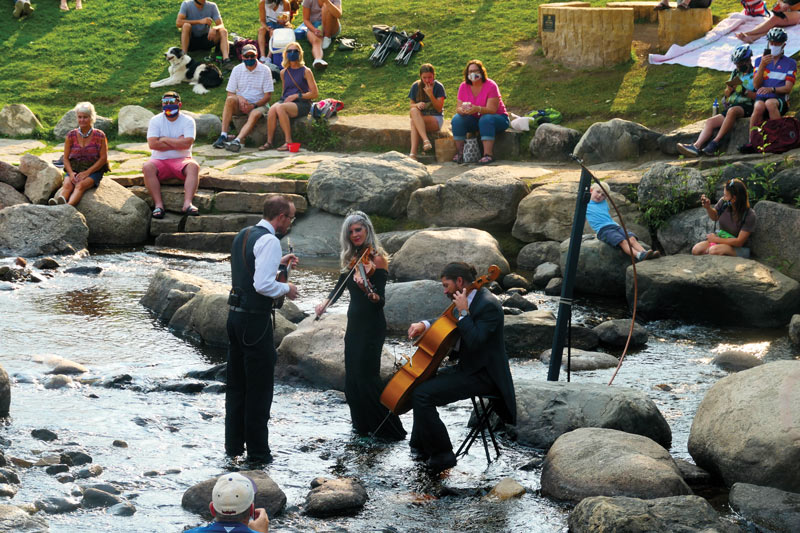
Playing IN and WITH the River
Despite limitations of the 2019–2020 Coronavirus Pandemic, Tree-o recently jumped at an invite to perform a three-day outdoor pop-up concert in Breckenridge, a ski resort town in Colorado. The venue fit the adventurous trio—in the middle of the gently flowing Blue River. Smith immediately started designing a seven-foot-tall water harp. As always, he yearned to push boundaries. So, he hand built the water harp to amplify the sound of the water.
Smith planted his water harp a few inches under water behind him. The harp’s string picked up the vibrations of the rippling water and amplified them through huge speakers on the grassy hillside.
It was a Saturday evening in August and the scene looked like a postcard: Barefoot children climbing onto boulders in the Blue River. Parents, hikers, and cyclists were taking a break on the grassy hill. One hour before sunset, the scene turned surreal. Tree-o appeared. In the water!
Smith in a black tuxedo coattails waded out into the shallow river first. Larkin, in a white tuxedo vest, was followed by Lauffer, who was decked out in a full-length black evening gown. The trio nonchalantly positioned themselves closely in a triangle, facing each other. They launched into a soft melody. Children kept on playing in the water, a dog romped and splashed, as the sound of the current got louder and louder, and Tree-o improvised melodies with the sound of the river. Mid-way through Tree-o’s concert, Smith introduced Larkin, Lauffer, and lastly, the water.
Before the cold, wet trio waded out of the river, Smith took a moment to express their gratitude: “We will remember we shared this moment with a bunch of strangers in one of the only venues available to us now, and that is nature.”
After the audience applauded, the river kept playing and playing, and playing.
The First Nature Sound Recordings
On May 19, 1924, a new kind of duet played live on BBC Radio—cellist Beatrice Harrison and the nightingales in the woods around her garden in Oxted, England. Harrison had discovered her “accompanist” when she heard one bird echo the notes of her cello, and they played together every evening. They were an instant hit! BBC aired the duet every spring for 12 years and Harrison received 50,000 fan letters. They went on to record several songs together. The nightingales even had their own records, singing alone!
Humans need the music of nature, according to environmental psychologist Eleanor Ratcliffe, PhD. Recent research shows that the repetition and slow rhythm in birdsong, wind, water, leaves rustling and all nature sounds helps humans tune out other distractions.
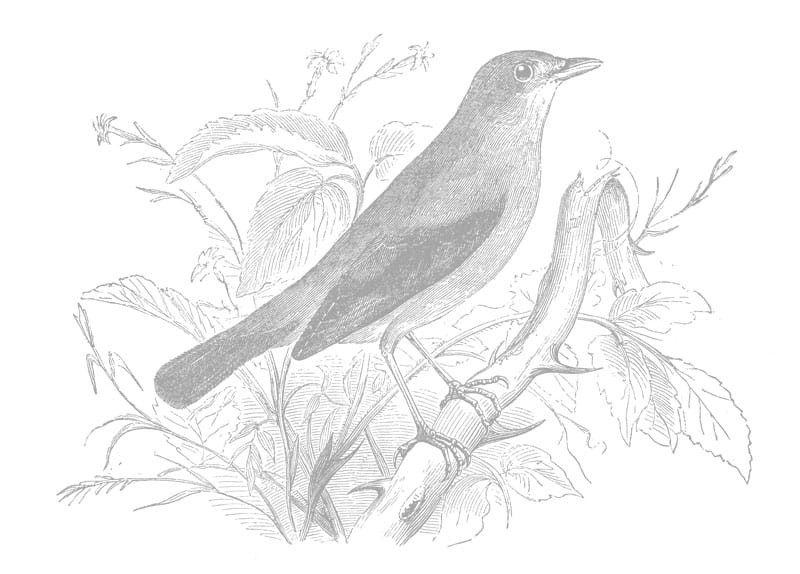
Here are the earliest recordings of the “songs” of nature
• 1889 •
Boy violinist Ludwig Paul Koch makes first known birdsong recording with a phonograph, Frankfurt Zoo
• 1924 •
First radio broadcast of cellist Beatrice Harrison playing while nightingales sang and echoed the notes of the cello
• 1929 •
Ludwig Paul Koch invents the sound-book to record animal sounds by attaching gramophone records to an illustrated book
• 1936 •
Ludwig Paul Koch records birds in the park of The Royal Castle of Laeken, Belgium
• Late 1940s •
First recording of a marine mammal, the beluga (or white) whales, Canada
• 1955 •
William W.H. Gunn, a pioneer soundscape composer, releases A Day in Algonquin Park, recordings of sounds in the forest, marsh and lake in Algonquin Provincial Park, Ontario, Canada
• 1958 •
Herpetologist (studies reptiles and amphibians) Charles M. Bogert compiles and narrates sounds of frogs and toads recorded in swamps, lakes, woods, and road-side ditches across North America
• 1960 •
Jim Fassett’s Symphony of Birds introduces musique concrete, sound assembled from field recordings of bird calls mixed with manipulated bird sounds
• 1964 •
Composer Walter De Maria releases Cricket Music, his drumming mixed with field recordings of nature, including insects
